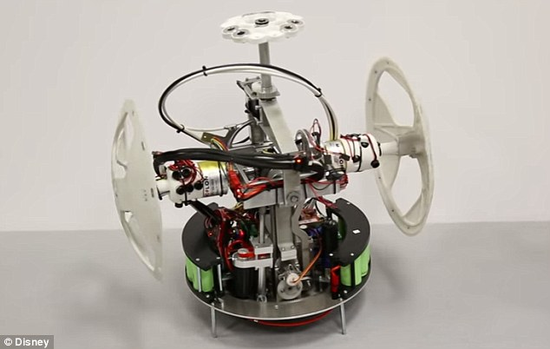According to the British "Daily Mail" report, the BB8 robot made a splash in the movie "Star Wars: The Force Awakens" and also captured the hearts of many viewers. Engineers who design BB8 are now revealing for the first time how they built this spherical robot. Many viewers thought that the BB8 was made through computer CGI effects, just like some of the early Star Wars films directed by George Lucas. Actually it is not. The BB8 robot appeared in the premiere of the movie, making people realize that it was not made by CGI special effects, which left a deep impression on the fans. BB8 design engineer Josh Lee and electronic software engineer Matt Denton first introduced the inner workings of this iconic robot. Through a motor-driven hammer inside the spherical casing, they were able to create a spherical wheel that would make the lower body of the BB8 move. The head of the BB8 is equipped with a disc with a magnet, which fits its head to the underlying spherical wheel and appears to be suspended above the spherical wheel. The maximum speed of the BB8 is 7 km/h, which is equivalent to the average walking speed of humans. The designers allowed the BB8 to make fine movements such as sliding the head to one side, which gave it a unique screen appeal. However, the designer revealed that the birth of this robot is a product of later whimsy, not part of the original plan. In fact, for the filming of the film, the engineer designed seven robots that can work under different conditions. These include a robot that is fixed to the ground by a metal plate and can swing on both sides. They also designed a "puppet" version of the robot, which the staff can manipulate through a special stick attached to the robot, which will be disposed of by post-production. There is also a version of the robot that has two wheels on the back like a tricycle, which allows it to travel on the sand during filming in the desert outside Abu Dhabi. The designers said, "These versions of the robot are able to do the shooting well. But we still think about how to move the robot without the stick or the two wheels on the back." How did the designer think about the current settings of BB8? An accident injured Harrison Ford's left leg ankle. So the staff put a month off. During the month, designers continued to think and start making prototypes of the BB8. He thought of several options, but eventually chose a motor-driven hammer. After he sent the video of the BB8 prototype to director JJ Abrams, the program was adopted. However, the designer has not revealed more design details of the BB8. For example, he did not disclose how the head was specifically loaded, but pointed out that there was always a problem with moving the head around when the BB8 moved around. But the designers said that in the future they might consider publishing a graphical illustration of the BB8 so that students can make their own BB8 robots. The designer said, "Many things you need to make a robot can be bought, for example, gyro sensors, motors. The size of the BB8 is very suitable, and it can be applied to a lot of physics. Perhaps the principle of magnetic field, maybe Gyro mechanics. This will be a great production project."
Metal Halide Light Tower
A metal halide light tower is a portable lighting system that uses metal halide lamps to provide bright and efficient illumination in outdoor or construction sites. It consists of a tall tower with multiple metal halide lamps mounted at the top, along with a generator or power source to provide electricity.
The metal halide light tower is typically mounted on a trailer or skid for easy transportation and positioning. The tower can be extended to a certain height to provide wide-area coverage and can be rotated or tilted to adjust the direction of the light. Some light towers also have telescopic masts for additional height adjustment.
Metal Halide Light Tower,Portable Mobile Light Towers Trailer,Vertical Retractable Light Tower,Mobile Lighting Tower Grandwatt Electric Corp. , https://www.grandwattelectric.com
Metal halide light towers are commonly used in construction sites, roadworks, mining operations, outdoor events, and emergency response situations. They provide powerful and uniform lighting, allowing workers to safely and efficiently perform their tasks during nighttime or low-light conditions.
In recent years, LED light towers have become increasingly popular due to their energy efficiency and longer lifespan. However, metal halide light towers are still widely used in many industries due to their affordability and high-quality light output.